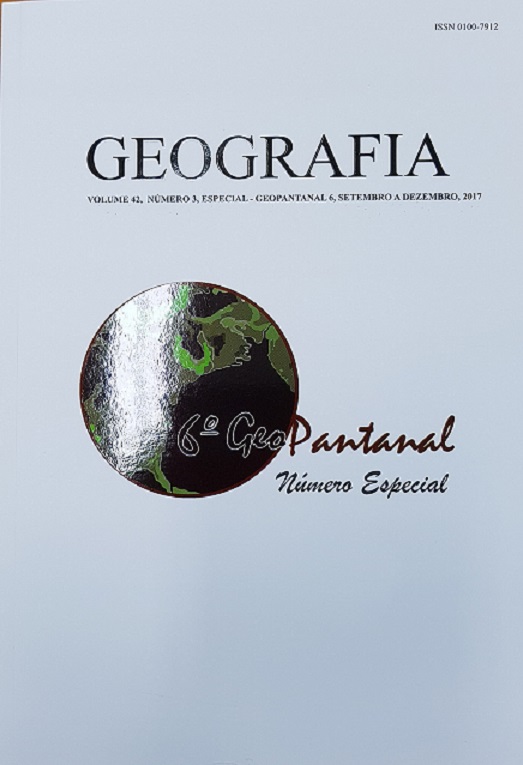SPATIOTEMPORAL EVOLUTION OF THE MARGINS OF LAKE UBERABA, PANTANAL FLOODPLAIN (BRAZIL)
DOI:
https://doi.org/10.5016/geografia.v42i3.13096Abstract
Aquatic macrophytes are important components of wetland ecosystems, and studying them contributes to a better understanding of ecological succession in the Pantanal. The function and history of floating macrophytes on the shores of Lake Uberaba, located on the Paraguay River floodplain, were examined. A multitemporal analysis of Landsat satellite images in the years 1984-2015 was conducted. For the analysis, a land cover map was generated with three classes: water, aquatic macrophytes, and surroundings (undefined vegetation). The results revealed ~21.4% decrease in open water area of the lake over a period of 26 years (-4.7 km2/yr.). The expansion of vegetation helps explain the loss of open water and the recent shrinkage of Lake Uberaba. Macrophyte surface area along the lake margins grew by 1.4 km2/yr. Through ecological succession, the growth and decay of aquatic plants (r-strategists) along the lake shore likely provided the soil substrate needed for colonization by terrestrial plant assemblages (k-strategists). This hypothesis that we propose to describe the evolution of dynamic geomorphological processes in Lake Uberaba should be tested in other areas to verify its applicability to similar systemsDownloads
Published
Issue
Section
License
The authors maintain the copyright and grant GEOGRAFIA the right of first publication, with the articles simultaneously licensed under the Creative Commons BY 4.0 License, which allows sharing and adapting the articles for any purpose, as long as appropriate credits and provisions of image rights, privacy or moral rights. Other legal attributions can be accessed at: https://creativecommons.org/licenses/by/4.0/legalcode.en.
Geography, Rio Claro, SP, Brazil - eISSN 1983-8700 is licensed under the Creative Commons BY 4.0 License.





